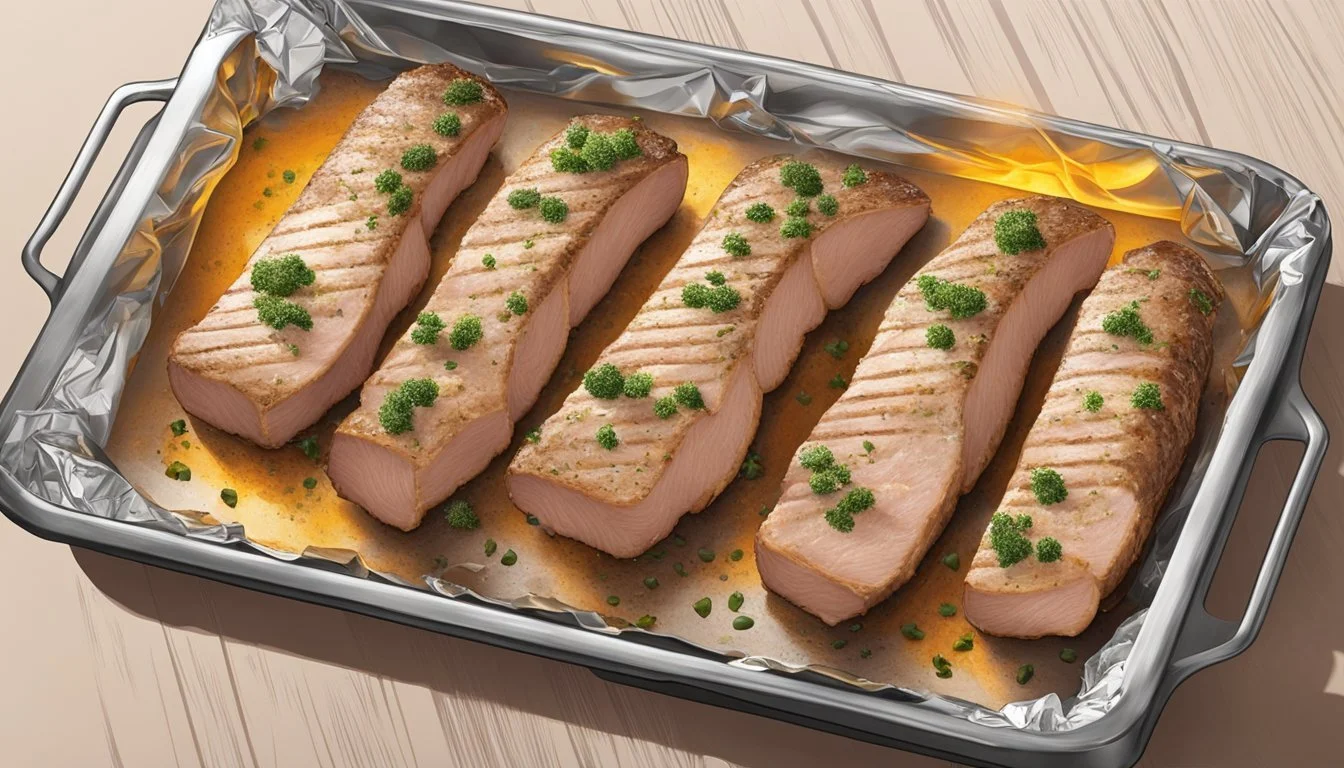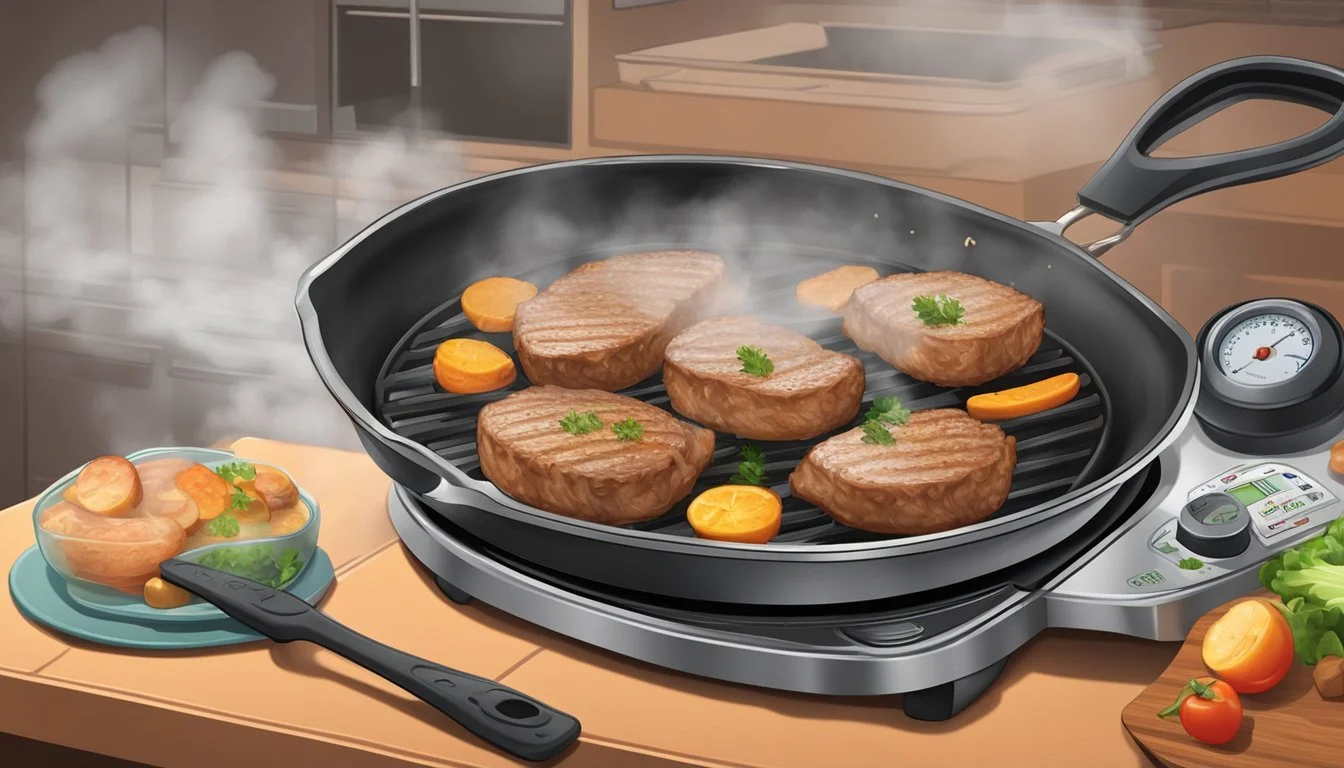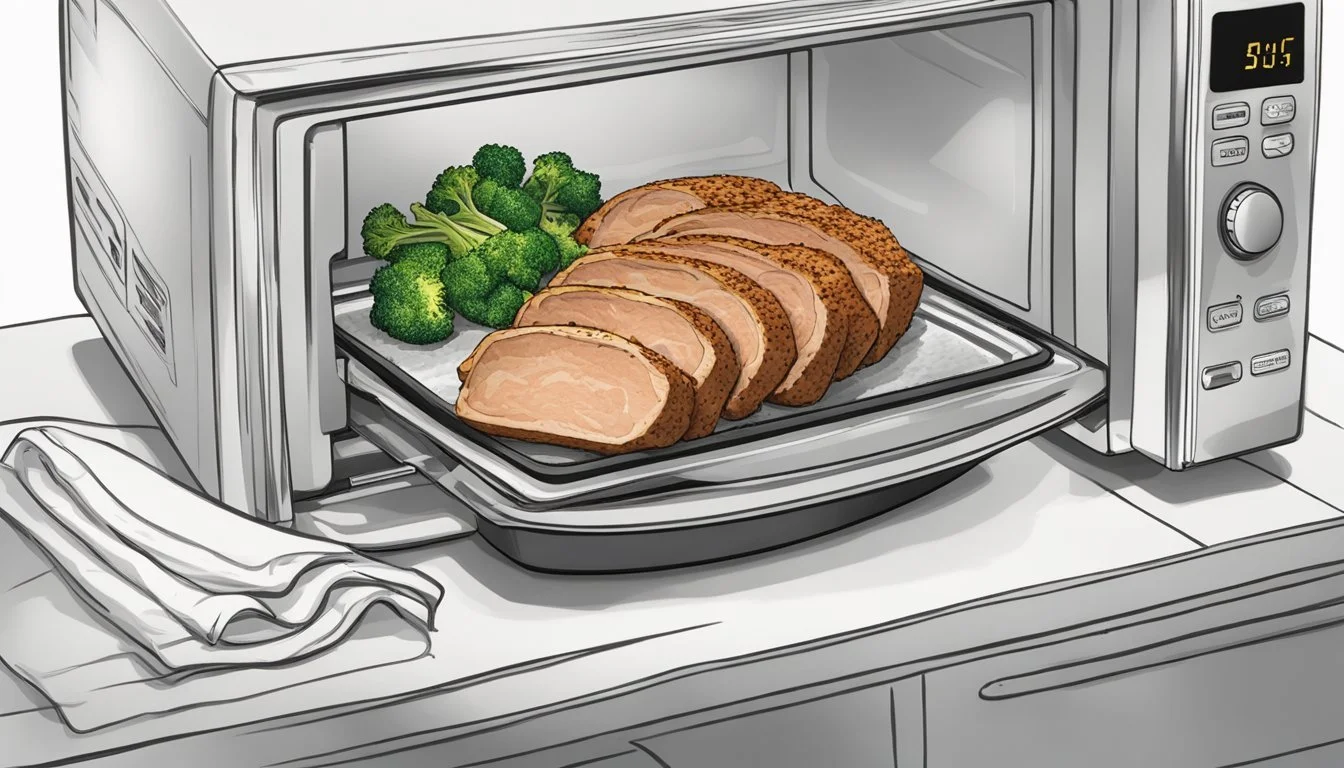Best Way to Reheat Pork Tenderloin
Ensuring Juiciness and Flavor Retention
Reheating pork tenderloin (What wine goes well with pork tenderloin?) while preserving its juiciness and flavor is a culinary challenge many cooks face. Pork tenderloin is known for its tenderness and lean quality, which can easily lead to dryness if not handled carefully during reheating. The key to maintaining its moisture and taste lies in the method and care taken to warm it through without overcooking. Understanding the proper techniques can transform leftover pork into a meal that is almost as enjoyable as when it was freshly cooked.
The ideal reheating strategy hinges on applying gentle heat. Using either the stovetop or oven to reheat the pork tenderloin allows for control over temperature and reduces the risk of the meat becoming tough and flavorless. Stovetop methods typically include heating the meat in a lightly oiled pan, covered to trap steam and evenly redistribute heat. Meanwhile, oven reheating often involves wrapping the tenderloin in foil and warming it at a low temperature to slowly bring up the internal heat without stripping away moisture.
Understanding Pork Tenderloin
Pork tenderloin is one of the most popular cuts of meat due to its leanness and versatility. This section will focus on its characteristics and the importance of maintaining its moisture for optimal flavor retention.
Characteristics of Pork Tenderloin
Pork tenderloin is a prime cut from the muscle that runs alongside the backbone. It is renowned for its:
Tenderness: As it is not a weight-bearing muscle, it contains less connective tissue, making it one of the most tender cuts of pork.
Lean nature: It has a low fat content, positioning it as a healthier protein-rich option.
Flavor: Pork tenderloin has a mild flavor that readily absorbs marinades and seasonings, allowing for a variety of flavors to be achieved.
Importance of Moisture Retention
Maintaining moisture in pork tenderloin is critical to preserving its:
Juiciness: Lean meat like pork tenderloin can dry out quickly if overcooked or reheated improperly, thus moisture retention is crucial for keeping the meat juicy.
Textures: Proper moisture levels contribute to the tender and supple textures that make pork tenderloin so appealing.
Flavors: Moisture carries flavors, and retaining it assures the enhancement of the tenderloin's natural taste.
Pre-Reheating Preparation
Ensuring that pork tenderloin leftovers retain their juiciness and flavor during reheating begins with proper preparation. This includes storage techniques, pre-heating procedures, and slicing methods.
Storing Leftover Pork Tenderloin
Leftovers must be stored properly to maintain quality. It is advised that one stores the leftover pork tenderloin in an airtight container or tightly wrapped in aluminum foil or plastic wrap. This should be done within two hours of cooking to prevent bacterial growth. The airtight container should then be placed in the refrigerator, where the pork tenderloin can be stored safely for up to three days.
Pre-Heating Instructions
Before reheating, one should bring the leftover pork tenderloin to room temperature; this aids in even reheating and prevents the meat from being tough. This step typically takes about 15-30 minutes depending on the size of the tenderloin. Once at room temperature, the selected reheating method's appliance — whether it's an oven, microwave, or air fryer — should be preheated according to the specifics of that method (e.g., 350°F for oven reheating).
Slicing Techniques for Reheating
Slicing the leftover pork tenderloin can reduce reheating time and promote even heat distribution. To maintain juiciness, slices should be approximately 1/2 inch thick. This can be done with a sharp knife to ensure clean cuts. Slicing before reheating is particularly useful when using a pan on the stove, as sliced meat will reheat more quickly than a whole tenderloin. Single-layer placement on the heating surface is crucial to avoid overlapping and uneven reheating.
Reheating Methods Overview
When reheating pork tenderloin, one’s goal is often to maintain its juiciness and flavor. The method chosen can greatly influence the outcome, with options like oven reheating, microwaves, or the stovetop providing different benefits.
Pros and Cons of Different Reheating Methods
Oven Method:
PROS CONS Evenly reheats large cuts Takes longer than other methods Preserves moisture and flavor Can dry out meat if not monitored
The oven method involves preheating the oven to a moderate temperature, usually around 325°F, and placing the pork tenderloin, which can be lightly coated with butter or cooking oil, in an oven-safe dish. The pork should be covered with foil to retain moisture.
Microwave Method:
PROS CONS Quick reheating Uneven heating may occur Convenient for small portions May alter texture if overheated
The microwave is a speedy option often set on a medium heat for short intervals, checking the meat's temperature frequently. To keep the tenderloin moist, one could add a splash of water or cover it with a damp paper towel before microwaving.
PROS CONS Offers control over heat Requires constant attention Can enhance flavor with oils Potential for overcooking
In a skillet, one can gently reheat slices of pork tenderloin with a thin layer of olive or cooking oil. The addition of a lid retains moisture. Keeping the heat at a medium setting and frequently flipping the slices will ensure even warming without drying out the meat.
Oven Reheating Techniques
Reheating pork tenderloin in the oven is a preferred method to retain its juiciness and flavor. Proper technique involves covering the meat, setting the correct temperature, and timing the heating process to prevent drying out the tenderloin.
Using Aluminum Foil for Moisture
To maintain the moisture of the pork tenderloin, one should wrap it in aluminum foil before placing it in the oven. This method helps to trap moisture, effectively steaming the meat during the reheating process. An oven-safe dish can be used to hold the foil-wrapped pork, which further aids in heat distribution and prevents juices from spilling.
Setting the Correct Temperature
It is crucial to set the oven to a moderate temperature to avoid overcooking the pork tenderloin. Preheat the oven to 350 degrees Fahrenheit. If using a convection oven, reduce the temperature by 25 degrees to account for more efficient heat distribution. This ensures a gentle warming that brings the pork to the desired internal temperature without sacrificing its texture.
Timing for Oven Reheating
The pork tenderloin should be heated until it reaches an internal temperature of 165°F, which typically requires 15 to 25 minutes, depending on the size of the piece. Meat should be checked at the 15-minute mark and returned to heat if it hasn't reached the safe internal temperature. Avoid prolonged heating to prevent the meat from becoming dry.
Microwave Reheating Steps
Reheating pork tenderloin in the microwave can be quick and convenient, but requires specific steps to ensure the meat remains juicy and flavorful.
Avoiding Dryness in the Microwave
To prevent your pork tenderloin from becoming dry in the microwave, one should ensure moisture retention. Begin by placing the pork tenderloin on a microwave-safe dish. A damp paper towel should be draped over the meat; this helps to maintain a moist environment during reheating. Alternatively, one may also use leftover cooking juices by drizzling them over the tenderloin before covering.
Appropriate Microwave Settings
The right microwave settings are crucial for reheating pork tenderloin properly. It's recommended to use the reheat setting if the microwave has one. If not, one should opt for a medium heat setting. Initially, heat the tenderloin for five minutes and then check the internal temperature. The pork should reach an internal temperature of 165°F before it is safe to consume. If not adequately heated, continue microwaving in two-minute intervals, and check the temperature again. Using a microwave-safe cover can promote even reheating and prevent splatters.
Stovetop Reheating Method
Reheating pork tenderloin on the stovetop allows for an even distribution of heat and the opportunity to retain moisture through steaming. One should use a skillet or frying pan with a tight-fitting lid to achieve the best results.
Stovetop Technique for Even Heating
To ensure even heating, one should use a skillet or frying pan, preferably cast iron for consistent heat distribution. It is important to set the burner to medium heat and add a thin layer of oil to the pan. When the oil begins to shimmer, indicating it is adequately heated, place the pork tenderloin in the pan in a single layer. A moderate temperature is key to reheating the tenderloin without overcooking it.
Creating Steam for Juiciness
Adding steam to the reheating process can prevent the pork tenderloin from drying out. This can be accomplished by introducing a small amount of liquid like water, broth, or gravy. Just a few tablespoons will suffice. After adding the liquid, promptly cover the pan with a lid to trap the steam. The steam created will provide a moist heating environment, helping to keep the meat juicy. It's beneficial to occasionally flip the pork tenderloin to ensure it heats evenly throughout.
Additional Reheating Appliances
When reheating pork tenderloin, selecting the appropriate appliance can make a significant difference in maintaining the juiciness and flavor of the meat. Air fryers and slow cookers, including the popular Crock-Pot brand, offer alternative methods to the traditional oven reheating.
Reheating with an Air Fryer
An air fryer, which essentially functions as a compact convection oven, circulates hot air around the pork tenderloin, promoting even heating. To reheat:
Preheat the air fryer to 350°F.
Wrap the tenderloin in aluminum foil, optionally adding a small amount of broth or butter for moisture.
Place in the air fryer basket and heat for 3-5 minutes.
Check after 3 minutes to ensure it’s warming evenly without drying out.
Utilizing a Slow Cooker for Reheating
A slow cooker or Crock-Pot can reheat pork tenderloin gently using its warm setting, which prevents the meat from drying out. The process is straightforward:
Place the pork tenderloin in the slow cooker.
Add a liquid such as stock or water to aid in maintaining moisture.
Cover and set the appliance on the warm setting.
Allow the meat to warm through gradually, checking periodically for the desired internal temperature of 165°F.
Ensuring Food Safety During Reheating
When reheating pork tenderloin, maintaining the safety and quality of the meat is essential. Achieving the ideal internal temperature is critical to prevent bacterial growth, ensuring that the pork is both safe to consume and delicious.
Ideal Internal Temperature
To ensure food safety during reheating, pork tenderloin should reach an internal temperature of at least 165°F (75°C). Use a meat thermometer to verify the temperature. This should be done after the initial heating period, and if the desired temperature hasn't been reached, additional heating in increments should be performed followed by another temperature check.
Preventing Bacterial Growth
The danger zone for bacterial growth in foods is between 40°F (4°C) and 140°F (60°C). To mitigate this risk, one should never leave pork tenderloin at room temperature for more than two hours. When reheating, it is important to heat the meat quickly to the ideal internal temperature to minimize the time spent in the danger zone. Additionally, one should refrigerate any leftovers promptly after the meal.
By adhering to these guidelines, one can ensure that the reheated pork tenderloin is not only flavorful and juicy but also safe for consumption.
Post-Reheating Tips
After successfully reheating pork tenderloin, one must be mindful of the steps that follow to ensure the meat remains juicy and flavorful. These post-reheating methods will make a significant difference in enhancing the overall quality of the pork tenderloin.
Resting Meat After Reheating
Once reheated, pork tenderloin should rest before serving. This pause allows the juices that have been driven to the center of the meat during reheating to redistribute throughout the tenderloin.
Rest Duration: Let the meat rest for approximately 5 minutes for slices and up to 10 minutes for a whole tenderloin.
Covering the Meat: Cover the meat loosely with foil during the rest period to retain warmth.
Adding Flavors Post-Reheating
Enhancing the pork tenderloin post-reheating with additional flavors can elevate the dish.
Sauces and Marinades: Gently warm a sauce or marinade and drizzle it over the tenderloin after reheating. This can help to moisten and infuse the meat with flavors.
Herbs and Spices: Fresh herbs like rosemary or thyme, or a sprinkle of finishing spices can be added after reheating to provide a fresh aroma and taste.
Creative Uses for Reheated Pork Tenderloin
Reheated pork tenderloin can serve as a versatile ingredient, transforming into an array of delectable dishes. Below, discover how to repurpose this flavorful meat into innovative sandwiches and how to use leftover portions to enhance other meals.
Innovative Sandwich Ideas
Using sliced pork tenderloin in sandwiches can turn an ordinary meal into a gourmet experience.
Cuban-Style Sandwich: Layer reheated pork with ham, Swiss cheese, pickles, and mustard on Cuban bread, pressing it in a panini press until crispy.
BBQ Pork Tenderloin Sandwich: Toss slices of pork with barbecue sauce, place on a bun, and top with coleslaw for a Southern twist.
Serving Suggestions for Leftover Portions
Leftover pork tenderloin portions can be the star in various dishes, maximizing the value of your meal.
Pork Tenderloin Salad: Toss chunks of tenderloin with mixed greens, a vinaigrette, and roasted vegetables for a hearty, healthy entrée.
Stir-Fry: Thinly slice the pork and stir-fry with Asian vegetables and sauce, serving over rice or noodles for a satisfying dinner.
By using reheated pork tenderloin creatively, one can elevate tasty leftovers into a selection of enticing and satisfying meals.







